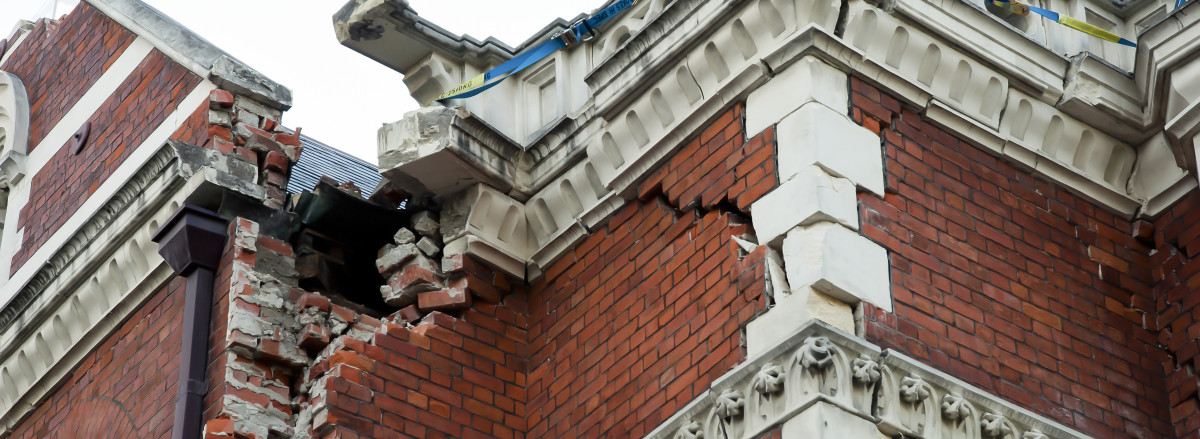Earthquake-prone buildings
27 Oct 2016, Featured, LBP & Regulation, Prove Your Know How

Have your say on the Building (Earthquake-prone Buildings) Amendment Act 2016 – consultation is now open and submissions due by 15 December
As reported in Under Construction August, the Building (Earthquake-prone Buildings) Amendment Act 2016 was enacted by Parliament in May 2016. MBIE is now consulting on proposals for regulations and a methodology that will support the new legislation when it takes effect. Read more to find out about the legislation itself and see below to find out what MBIE is looking for submission on.
The Amendment Act addresses problems with the current system for managing earthquake-prone buildings under the Building Act 2004, identified by the Canterbury Earthquakes Royal Commission as part of a comprehensive government review. It also takes account of the views of the many submissions made during the development of the legislation.
The Amendment Act standardises the rules and processes that apply to identifying and remediating earthquake-prone buildings.
It avoids a ‘one size fits all’ approach, prioritising geographical areas and buildings that pose the greatest risk to life. It also ensures the government’s response is proportionate to risk, costs are minimised and New Zealand retains as much of its built heritage as possible.
Under the new legislation:
- The threshold for defining an earthquake-prone building remains, with amendments to clarify certain aspects (including that it applies to parts of buildings).
- New Zealand is categorised into areas of high, medium and low seismic risk (with timeframes for identifying potentially earthquake-prone buildings of five, ten and 15 years, and timeframes for strengthening earthquake-prone buildings of 15, 25 and 35 years, dependent on the seismic risk of the area).
The new legislation:
- Excludes certain buildings (including most residential buildings).
- Establishes a new methodology for identifying earthquake-prone buildings (set by the chief executive of MBIE). The EPB methodology will further target buildings that pose the greatest risk, and proposals for which buildings will be targeted are being consulted on.
- Prioritises earthquake-prone education buildings, emergency service facilities, certain hospital buildings and buildings located on strategic routes (if identified by territorial authorities), by requiring that in medium and high-seismic risk areas they are identified and remediated in half the standard time. Where sufficient vehicle and pedestrian traffic could be affected, certain parts of unreinforced masonry buildings (such as parapets or verandas) in areas of medium and high-seismic risk will also be prioritised.
- Introduces a new requirement to remediate earthquake-prone buildings early, when substantial alterations are undertaken. Proposals for a regulation for substantial alterations are being consulted on.
- Provides for an opt-in extension of up to ten years to remediate Category 1 listed heritage buildings and buildings on the National Historic Landmarks List.
- Provides for opt-in exemptions from the requirement to remediate for some buildings, on a case-by-case basis. Proposals for a regulation for exemptions are being consulted on.
- Provides for a publicly available national register of earthquake-prone buildings and enhanced notices to be issued to help the public better differentiate between such buildings and encourage owners to remediate them. Proposals for regulations to establish earthquake-rating categories and to set the form of EPB notices are being consulted on.
MBIE is consulting on regulations in the following areas:
- Defining the meaning of ‘ultimate capacity’. This will clarify the level of seismic performance required to help councils determine whether a building is earthquake-prone.
- The criteria for the level of other building work that will trigger the need for early seismic strengthening to be carried out.
- Specifying the characteristics earthquake-prone buildings must have to be considered for exemptions from the requirement to undertake remedial work.
- Establishing an earthquake rating system that provides a measure of a building’s expected performance during an earthquake.
- The appearance of public notices describing an earthquake-prone building’s level of seismic risk.
NEWSFLASH: ASBESTOS BAN
A ban on the import of all products containing asbestos, including building products and materials, came into force on 1 October 2016 under the Imports and Exports (Restrictions) Act 1988.
Under the ban, importers will need to understand and follow the rules and confirm their imports do not contain asbestos.
The ban will bring New Zealand’s regulations into line with many other countries, including Australia and the European Union.
The manufacture and importing of raw asbestos is already banned in New Zealand under the Hazardous Substances and New Organisms Act 1996, although under the Act products containing asbestos were still able to be imported for a range of uses.
A 2014 inventory by the Ministry for the Environment (MFE) showed alternative products are available in most cases. However, from 1 October 2016, if exceptions to the ban are required, for example if there are no suitable alternative products, importers can apply to the Environmental Protection Authority (EPA) for a permit, but only in limited circumstances.
Register to earn LBP Points Sign in



